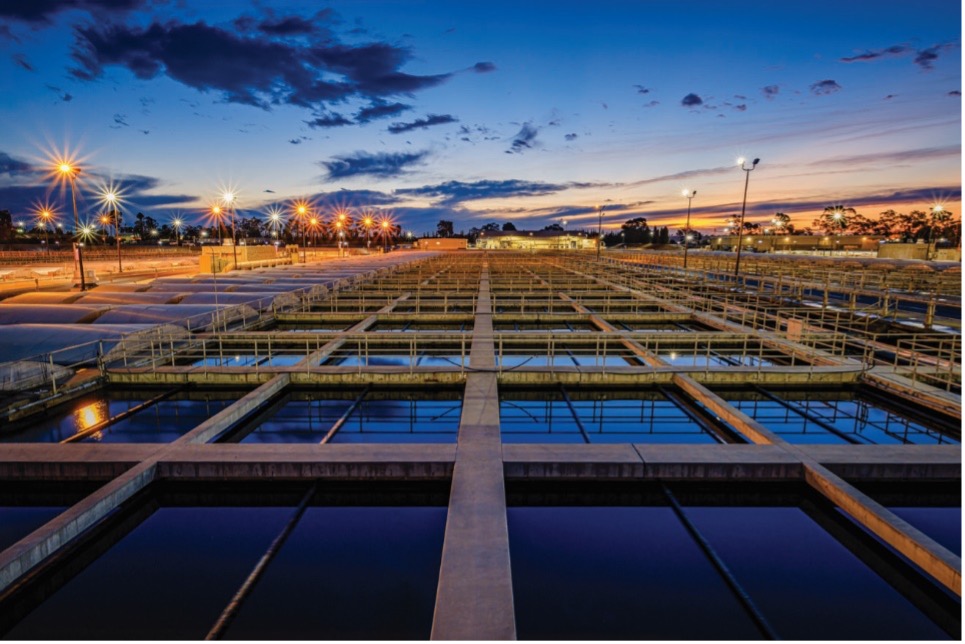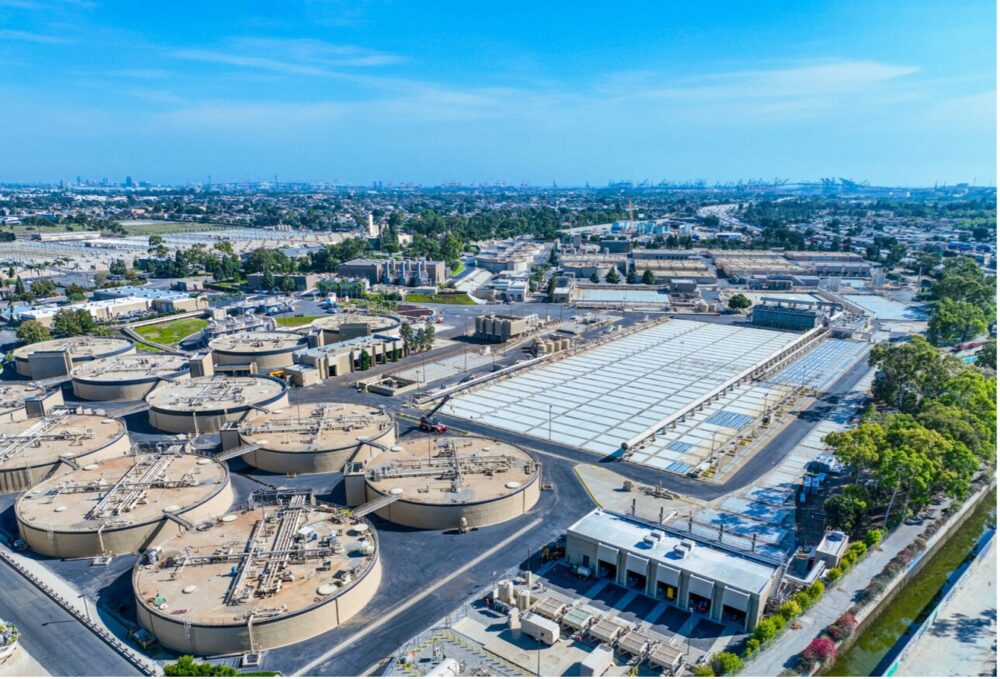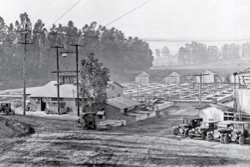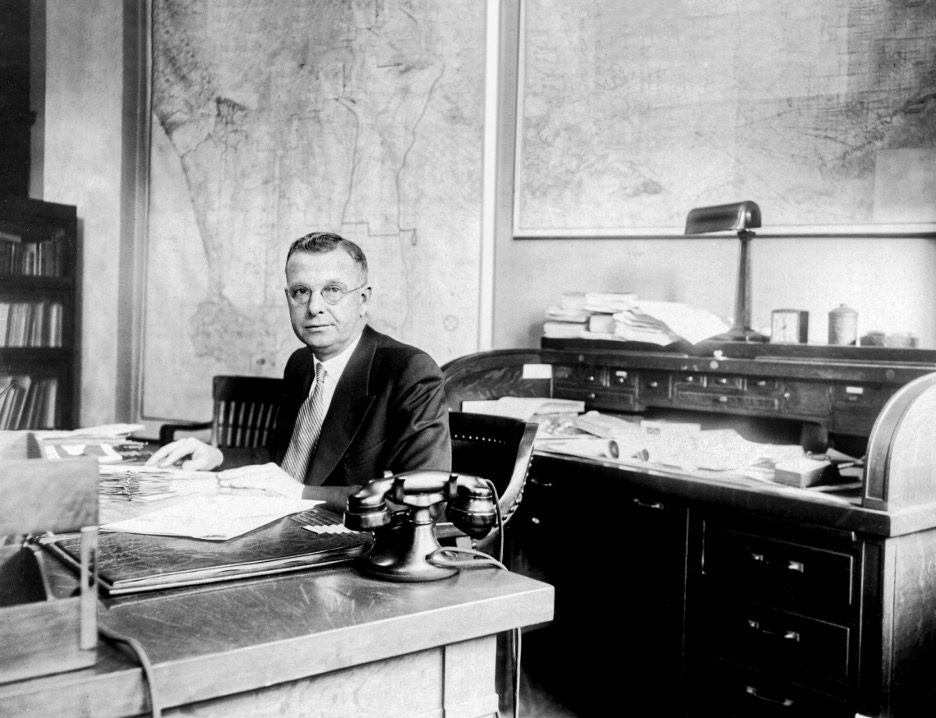
The Joint Water Pollution Control Plant was the Los Angeles County Sanitation Districts’ largest treatment plant and provides service for 5 million people. For several years, Sanitation Districts’ leadership had considered changing the plant’s name to better reflect the services the plant now provides. With 2023 being the agency’s centennial, they decided now was the right time and the plant was renamed the A.K. Warren Water Resource Facility (Warren Facility) during the agency’s centennial celebration on October 26, 2023.
 Evolving to better serve the region
Evolving to better serve the regionThe Sanitation Districts were formed in 1923 to protect public health and the environment. Over the years, their mission evolved to include converting waste into resources that help Los Angeles County be more sustainable.
Like the agency, the Warren Facility’s role has changed. The facility started operating in 1928 with the name Joint Disposal Plant to reflect its initial role: joint treatment and disposal of Los Angeles County’s sewage. In 1963, the name changed to Joint Water Pollution Control Plant to recognize the need to remove pollutants to protect the ocean.
Over its 95-year history, the facility has hosted several innovations. In the 1920s, dried biosolids (the treated solid material from wastewater treatment) were sold by Kellogg Garden Products as fertilizer. Today, the much of the nutrient-rich biosolids produced by the Warren Facility are composted and applied to agricultural land to improve soil for farming.
In the 1930s, biogas from the facility’s anaerobic digesters (which are used to treat wastewater solids) fueled internal combustion engines that created electricity and powered pumps meeting all the facility’s power needs. Today, biogas fuels an onsite power plant called the Total Energy Facility. Biogas is also created from food waste that is trucked to the site and digested with the solids removed during wastewater treatment. The Warren Facility now produces more energy than it needs, and excess biogas is sold as fuel at a nearby compressed natural gas vehicle fueling station. Surplus electricity is sold to the local power company.
The Warren Facility accepts much of the region’s industrial sewage, which results in the facility’s treated water being too salty to reuse.

Joint Disposal Plant in 1928
Removing salt requires advanced treatment, which was long considered too costly. However, recent improvements in technology and changes to our water supply now make advanced treatment feasible.
To recycle the Warren Facility’s water, the Districts have partnered with the Metropolitan Water District of Southern California on the Pure Water Southern California Program. This program would purify the cleaned water from the Warren Facility (including removing salt) to create a reliable, drought-resistant water supply for 1.5 million people. This program is currently in the environmental planning phase and could become one of the world’s largest water recycling programs.
The Warren Facility has become a water resource facility and completing the Pure Water program would finish this transformation. Essentially everything that comes into the facility would be recycled into different resources − water, compost and green energy.
In the 1910s and 1920s, Albert Kendall Warren worked as a surveyor in the Los Angeles County Surveyor’s Office. He understood drainage patterns, watersheds and the need for simplicity in operation. He envisioned a sewer system that used gravity to move wastewater to a regional treatment facility. A.K. Warren joined forces with Assemblyman Hugh Pomeroy and Los Angeles County Supervisor R.F. McClellen to get the County Sanitation District Act passed in 1923. This act enabled the formation of the Sanitation Districts, and Warren became the Districts’ first Chief Engineer. He implemented his plan for a regional sewer system with a shared wastewater treatment plant and, in time, an ocean outfall system. Communities across the county quickly joined the Sanitation Districts. By 1925, nearly all the cities in the Los Angeles Basin had joined the Districts, except for the City of Los Angeles. Flows increased from 2 to 10 million gallons per day from 1928 to 1930.

A.K. Warren, the Sanitation Districts’ first Chief Engineer and General Manager.
The Sanitation Districts provided the best of both worlds – local control by mayors of the member cities and the efficiency of a regional system. A.K. Warren had a visionary plan and the perseverance to make it a reality, despite all the challenges of building such a large system. The Joint Plant was renamed the A.K. Warren Water Resource Facility in recognition of the course that Mr. Warren set for the agency that has served the people of Los Angeles County well for 100 years.